Getting Things Done: The Art of Stress-Free Productivity 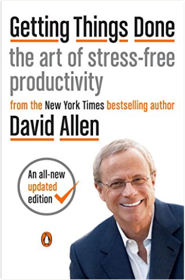 "A completely revised and updated edition of the blockbuster bestseller from 'the personal productivity guru'"—Fast Company Since it was first published almost fifteen years ago, David Allen’s Getting Things Done has become one of the most influential business books of its era, and the ultimate book on personal organization. “GTD” is now shorthand for an entire way of approaching professional and personal tasks, and has spawned an entire culture of websites, organizational tools, seminars, and offshoots. Allen has rewritten the book from start to finish, tweaking his classic text with important perspectives on the new workplace, and adding material that will make the book fresh and relevant for years to come. This new edition of Getting Things Done will be welcomed not only by its hundreds of thousands of existing fans but also by a whole new generation eager to adopt its proven principles. Sasha Savvy Loves to Code 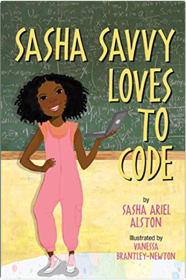 Product Leadership: How Top Product Managers Launch Awesome Products and Build Successful Teams 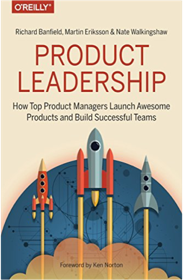 This insightful book presents interviews with nearly 100 leading product managers from all over the world. Authors Richard Banfield, Martin Eriksson, and Nate Walkingshaw draw on decades of experience in product design and development to capture the approaches, styles, insights, and techniques of successful product managers. If you want to understand what drives good product leaders, this book is an irreplaceable resource. In three parts, Product Leadership helps you explore: Themes and patterns of successful teams and their leaders, and ways to attain those characteristicsBest approaches for guiding your product team through the startup, emerging, and enterprise stages of a company’s evolutionStrategies and tactics for working with customers, agencies, partners, and external stakeholders Brotopia: Breaking Up the Boys' Club of Silicon Valley 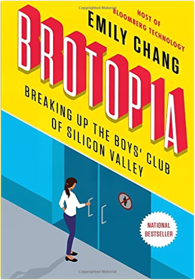 "Excellent." —San Francisco Chronicle "Brotopia is more than a business book. Silicon Valley holds extraordinary power over our present lives as well as whatever utopia (or nightmare) might come next." —New York Times Silicon Valley is a modern utopia where anyone can change the world. Unless you're a woman. For women in tech, Silicon Valley is not a fantasyland of unicorns, virtual reality rainbows, and 3D-printed lollipops, where millions of dollars grow on trees. It's a "Brotopia," where men hold all the cards and make all the rules. Vastly outnumbered, women face toxic workplaces rife with discrimination and sexual harassment, where investors take meetings in hot tubs and network at sex parties. In this powerful exposé, Bloomberg TV journalist Emily Chang reveals how Silicon Valley got so sexist despite its utopian ideals, why bro culture endures despite decades of companies claiming the moral high ground (Don't Be Evil! Connect the World!)—and how women are finally starting to speak out and fight back. Drawing on her deep network of Silicon Valley insiders, Chang opens the boardroom doors of male-dominated venture capital firms like Kleiner Perkins, the subject of Ellen Pao's high-profile gender discrimination lawsuit, and Sequoia, where a partner once famously said they "won't lower their standards" just to hire women. Interviews with Facebook COO Sheryl Sandberg, YouTube CEO Susan Wojcicki, and former Yahoo! CEO Marissa Mayer—who got their start at Google, where just one in five engineers is a woman—reveal just how hard it is to crack the Silicon Ceiling. And Chang shows how women such as former Uber engineer Susan Fowler, entrepreneur Niniane Wang, and game developer Brianna Wu, have risked their careers and sometimes their lives to pave a way for other women. Silicon Valley's aggressive, misogynistic, work-at-all costs culture has shut women out of the greatest wealth creation in the history of the world. It's time to break up the boys' club. Emily Chang shows us how to fix this toxic culture—to bring down Brotopia, once and for all. What Happened 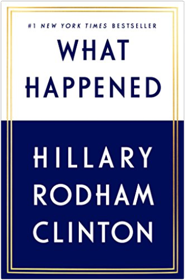 “In the past, for reasons I try to explain, I’ve often felt I had to be careful in public, like I was up on a wire without a net. Now I’m letting my guard down.” —Hillary Rodham Clinton, from the introduction of What Happened For the first time, Hillary Rodham Clinton reveals what she was thinking and feeling during one of the most controversial and unpredictable presidential elections in history. Now free from the constraints of running, Hillary takes you inside the intense personal experience of becoming the first woman nominated for president by a major party in an election marked by rage, sexism, exhilarating highs and infuriating lows, stranger-than-fiction twists, Russian interference, and an opponent who broke all the rules. This is her most personal memoir yet. In these pages, she describes what it was like to run against Donald Trump, the mistakes she made, how she has coped with a shocking and devastating loss, and how she found the strength to pick herself back up afterward. With humor and candor, she tells readers what it took to get back on her feet—the rituals, relationships, and reading that got her through, and what the experience has taught her about life. She speaks about the challenges of being a strong woman in the public eye, the criticism over her voice, age, and appearance, and the double standard confronting women in politics. She lays out how the 2016 election was marked by an unprecedented assault on our democracy by a foreign adversary. By analyzing the evidence and connecting the dots, Hillary shows just how dangerous the forces are that shaped the outcome, and why Americans need to understand them to protect our values and our democracy in the future. The election of 2016 was unprecedented and historic. What Happened is the story of that campaign and its aftermath—both a deeply intimate account and a cautionary tale for the nation. The Senior Software Engineer: 11 Practices of an Effective Technical Leader 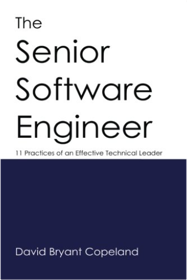 Mobile Application Security 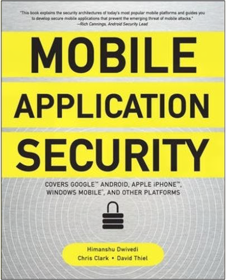 Implement a systematic approach to security in your mobile application development with help from this practical guide. Featuring case studies, code examples, and best practices, Mobile Application Security details how to protect against vulnerabilities in the latest smartphone and PDA platforms. Maximize isolation, lockdown internal and removable storage, work with sandboxing and signing, and encrypt sensitive user information. Safeguards against viruses, worms, malware, and buffer overflow exploits are also covered in this comprehensive resource. Design highly isolated, secure, and authenticated mobile applicationsUse the Google Android emulator, debugger, and third-party security toolsConfigure Apple iPhone APIs to prevent overflow and SQL injection attacksEmploy private and public key cryptography on Windows Mobile devicesEnforce fine-grained security policies using the BlackBerry Enterprise ServerPlug holes in Java Mobile Edition, SymbianOS, and WebOS applicationsTest for XSS, CSRF, HTTP redirects, and phishing attacks on WAP/Mobile HTML applicationsIdentify and eliminate threats from Bluetooth, SMS, and GPS services Himanshu Dwivedi is a co-founder of iSEC Partners (www.isecpartners.com), an information security firm specializing in application security. Chris Clark is a principal security consultant with iSEC Partners. David Thiel is a principal security consultant with iSEC Partners. Advanced Swift 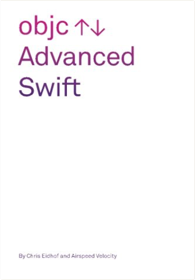 In this book, we’ll write about advanced concepts in Swift programming. If you have read the Swift Programming Guide, and want to explore more, this book is for you. Swift is a great language for systems programming, but also lends itself for very high-level programming. We’ll explore both high-level topics (for example, programming with generics and protocols), as well as low-level topics (for example, wrapping a C library and string internals). Timeless Laws of Software Development 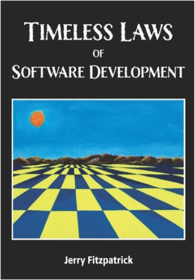 Disrupters: Success Strategies from Women Who Break the Mold 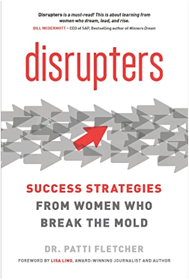 Disrupters shows what different women in business have done to reach success as they define it. From board members to CEOs to freelancers, the business world is stacked against women because they follow the unspoken rules of business culture made long before women entered the workforce. Tech executive, board member, and angel investor Dr. Patti Fletcher recognizes those rules and then showcases the women who have found success by breaking them. With exciting insights and uplifting stories, Disrupters demystifies what it takes to go where so few have gone before by: Exploring the mindsets that help or hinder success against all oddsDiscovering the right time to begin the journey to a role that feels too big and too hard to obtainLearning the habits, tactics, and relationships that separate those who succeed from those who do notBuilding a personal board of directors that will catapult you to the professional boardroomRevealing what it means to achieve your own version of success with case studies and interviews with women of diverse races, ages, backgrounds, and industries Introduction to Computer Graphics 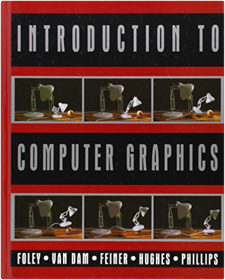 Fight Like a Girl 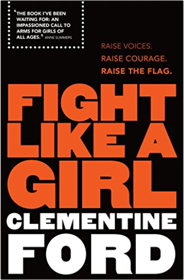 The Manager's Path: A Guide for Tech Leaders Navigating Growth and Change 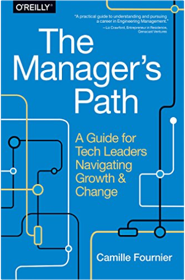 From mentoring interns to working with senior staff, you’ll get actionable advice for approaching various obstacles in your path. This book is ideal whether you’re a new manager, a mentor, or a more experienced leader looking for fresh advice. Pick up this book and learn how to become a better manager and leader in your organization. Begin by exploring what you expect from a managerUnderstand what it takes to be a good mentor, and a good tech leadLearn how to manage individual members while remaining focused on the entire teamUnderstand how to manage yourself and avoid common pitfalls that challenge many leadersManage multiple teams and learn how to manage managersLearn how to build and bootstrap a unifying culture in teams The Passionate Programmer: Creating a Remarkable Career in Software Development  The choices you make about which technologies to focus on and which business domains to master have at least as much impact on your success as your technical knowledge itself—don't let those choices be accidental. We'll walk through all aspects of the decision-making process, so you can ensure that you're investing your time and energy in the right areas. You'll develop a structured plan for keeping your mind engaged and your skills fresh. You'll learn how to assess your skills in terms of where they fit on the value chain, driving you away from commodity skills and toward those that are in high demand. Through a mix of high-level, thought-provoking essays and tactical "Act on It" sections, you will come away with concrete plans you can put into action immediately. You'll also get a chance to read the perspectives of several highly successful members of our industry from a variety of career paths. As with any product or service, if nobody knows what you're selling, nobody will buy. We'll walk through the often-neglected world of marketing, and you'll create a plan to market yourself both inside your company and to the industry in general. Above all, you'll see how you can set the direction of your career, leading to a more fulfilling and remarkable professional life. Refactoring: Improving the Design of Existing Code  Design Patterns: Elements of Reusable Object-Oriented Software  High Output Management 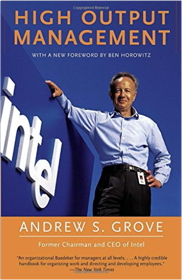 The essential skill of creating and maintaining new businesses—the art of the entrepreneur—can be summed up in a single word: managing. Born of Grove’s experiences at one of America’s leading technology companies, High Output Management is equally appropriate for sales managers, accountants, consultants, and teachers, as well as CEOs and startup founders. Grove covers techniques for creating highly productive teams, demonstrating methods of motivation that lead to peak performance—throughout, High Output Management is a practical handbook for navigating real-life business scenarios and a powerful management manifesto with the ability to revolutionize the way we work. The Power of Moments: Why Certain Experiences Have Extraordinary Impact 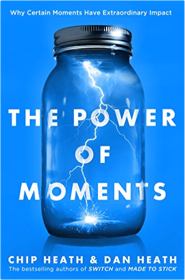 Computer Architecture: A Quantitative Approach, 3rd Edition 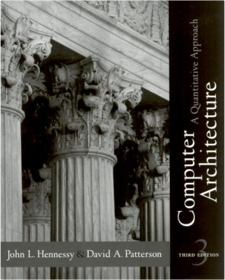 The book retains its highly rated features: Fallacies and Pitfalls, which share the hard-won lessons of real designers; Historical Perspectives, which provide a deeper look at computer design history; Putting it all Together, which present a design example that illustrates the principles of the chapter; Worked Examples, which challenge the reader to apply the concepts, theories and methods in smaller scale problems; and Cross-Cutting Issues, which show how the ideas covered in one chapter interact with those presented in others. In addition, a new feature, Another View, presents brief design examples in one of the three domains other than the one chosen for Putting It All Together. The authors present a new organization of the material as well, reducing the overlap with their other text, Computer Organization and Design: A Hardware/Software Approach 2/e, and offering more in-depth treatment of advanced topics in multithreading, instruction level parallelism, VLIW architectures, memory hierarchies, storage devices and network technologies. Also new to this edition, is the adoption of the MIPS 64 as the instruction set architecture. In addition to several online appendixes, two new appendixes will be printed in the book: one contains a complete review of the basic concepts of pipelining, the other provides solutions a selection of the exercises. Both will be invaluable to the student or professional learning on her own or in the classroom. Hennessy and Patterson continue to focus on fundamental techniques for designing real machines and for maximizing their cost/performance. * Presents state-of-the-art design examples including: * IA-64 architecture and its first implementation, the Itanium * Pipeline designs for Pentium III and Pentium IV * The cluster that runs the Google search engine * EMC storage systems and their performance * Sony Playstation 2 * Infiniband, a new storage area and system area network * SunFire 6800 multiprocessor server and its processor the UltraSPARC III * Trimedia TM32 media processor and the Transmeta Crusoe processor * Examines quantitative performance analysis in the commercial server market and the embedded market, as well as the traditional desktop market. Updates all the examples and figures with the most recent benchmarks, such as SPEC 2000. * Expands coverage of instruction sets to include descriptions of digital signal processors, media processors, and multimedia extensions to desktop processors. * Analyzes capacity, cost, and performance of disks over two decades. Surveys the role of clusters in scientific computing and commercial computing. * Presents a survey, taxonomy, and the benchmarks of errors and failures in computer systems. * Presents detailed descriptions of the design of storage systems and of clusters. * Surveys memory hierarchies in modern microprocessors and the key parameters of modern disks. * Presents a glossary of networking terms. DEMYSTIFYING PUBLIC SPEAKING  Designing for Performance: Weighing Aesthetics and Speed 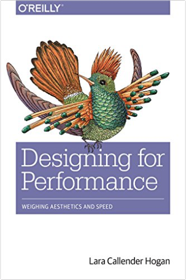 To get started, all you need are basic HTML and CSS skills and Photoshop experience. Topics include: The impact of page load time on your site, brand, and usersPage speed basics: how browsers retrieve and render contentBest practices for optimizing and loading imagesHow to clean up HTML and CSS, and optimize web fontsMobile-first design with performance goals by breakpointUsing tools to measure performance as your site evolvesMethods for shaping an organization’s performance culture The Hard Thing About Hard Things: Building a Business When There Are No Easy Answers 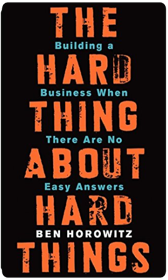 While many people talk about how great it is to start a business, very few are honest about how difficult it is to run one. Ben Horowitz analyzes the problems that confront leaders every day, sharing the insights he’s gained developing, managing, selling, buying, investing in, and supervising technology companies. A lifelong rap fanatic, he amplifies business lessons with lyrics from his favorite songs, telling it straight about everything from firing friends to poaching competitors, cultivating and sustaining a CEO mentality to knowing the right time to cash in. Filled with his trademark humor and straight talk, The Hard Thing About Hard Things is invaluable for veteran entrepreneurs as well as those aspiring to their own new ventures, drawing from Horowitz's personal and often humbling experiences. Thrive: The Third Metric to Redefining Success and Creating a Life of Well-Being, Wisdom, and Wonder  Arianna Huffington's personal wake-up call came in the form of a broken cheekbone and a nasty gash over her eye—the result of a fall brought on by exhaustion and lack of sleep. As the cofounder and editor-in-chief of the Huffington Post Media Group—one of the fastest growing media companies in the world—celebrated as one of the world's most influential women, and gracing the covers of magazines, she was, by any traditional measure, extraordinarily successful. Yet as she found herself going from brain MRI to CAT scan to echocardiogram, to find out if there was any underlying medical problem beyond exhaustion, she wondered is this really what success feels like? As more and more people are coming to realize, there is far more to living a truly successful life than just earning a bigger salary and capturing a corner office. Our relentless pursuit of the two traditional metrics of success—money and power—has led to an epidemic of burnout and stress-related illnesses, and an erosion in the quality of our relationships, family life, and, ironically, our careers. In being connected to the world 24/7, we're losing our connection to what truly matters. Our current definition of success is, as Thrive shows, literally killing us. We need a new way forward. In a commencement address Arianna gave at Smith College in the spring of 2013, she likened our drive for money and power to two legs of a three-legged stool. They may hold us up temporarily, but sooner or later we're going to topple over. We need a third leg—a third metric for defining success—to truly thrive. That third metric, she writes in Thrive, includes our well-being, our ability to draw on our intuition and inner wisdom, our sense of wonder, and our capacity for compassion and giving. As Arianna points out, our eulogies celebrate our lives very differently from the way society defines success. They don't commemorate our long hours in the office, our promotions, or our sterling PowerPoint presentations as we relentlessly raced to climb up the career ladder. They are not about our resumes—they are about cherished memories, shared adventures, small kindnesses and acts of generosity, lifelong passions, and the things that made us laugh. In this deeply personal book, Arianna talks candidly about her own challenges with managing time and prioritizing the demands of a career and raising two daughters—of juggling business deadlines and family crises, a harried dance that led to her collapse and to her "aha moment." Drawing on the latest groundbreaking research and scientific findings in the fields of psychology, sports, sleep, and physiology that show the profound and transformative effects of meditation, mindfulness, unplugging, and giving, Arianna shows us the way to a revolution in our culture, our thinking, our workplace, and our lives. Extending Swift Value(s) to the Server  The Field Guide to Human-Centered Design  The ThoughtWorks Anthology, Volume 2: More Essays on Software Technology and Innovation 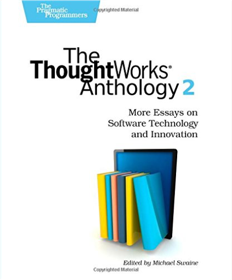 This new collection of essays from the experts at ThoughtWorks offers practical insight and advice on a range of challenges faced daily by software developers and IT professionals. It covers a broad spectrum of software development topics, from tuning agile methodologies to hard-core language geekery. This anthology captures the wide-ranging intellect and diversity of ThoughtWorks, reflected through practical and timely topics. In it, you'll find from-the-trenches advice on topics such as continuous integration, testing, and improving the software delivery process. See how people use functional programming techniques in object-oriented languages, modern Java web applications, and deal with current problems in JavaScript development. Scan an overview of the most interesting programming languages today and the current state of information visualization. And it's all field-tested insight, because it comes from the practical perspective of ThoughtWorks experts. Each essay focuses on extending your skills and enlarging your toolkit. And each is drawn from practical experience gained in the field. You'll benefit from this book if you are involved in developing, deploying, or testing software, either as a manager or developer. Coffee Gives Me Superpowers: An Illustrated Book about the Most Awesome Beverage on Earth 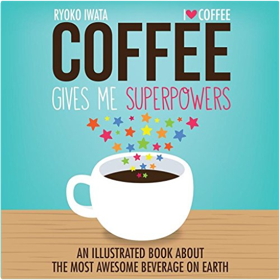 If coffee is the foundation of your food pyramid, then this is your book. Inspired by Ryoko Iwata's popular Web site, I Love Coffee (en.ilovecoffee.jp), Coffee Gives Me Superpowers is overflowing with infographics and fun, interesting facts about the most awesome beverage on earth written by Ryoko, a Japanese coffee-lover living in Seattle. The book includes the most popular pieces on the site, such as "Your Brain on Beer vs. Coffee," "10 Coffee Myths," "The Best Time of Day to Drink Coffee (According to Science)," and "10 Things You Probably Didn't Know about Caffeine," plus 25 percent new, original material that is available only in this book. The Unix Programming Environment 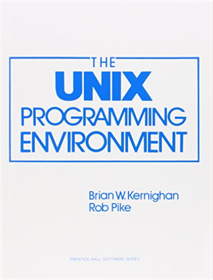 3D iOS Games by Tutorials: Beginning 3D iOS Game Development with Swift 2  Learn how to make 3D games in Swift, using Apple's built-in 3D game framework: Scene Kit. Through a series of mini-games and challenges, you will go from beginner to advanced and learn everything you need to make your own 3D game! By the time you’re finished reading this book, you will have made 4 complete mini-games, including games similar to Fruit Ninja, Breakout, Marble Madness, and Crossy Road! Topics Covered in 3D iOS Games by Tutorials:Scene Kit: Get to know the basics with your first Scene Kit game project.Nodes: Use nodes with geometry and cameras to construct a 3D scene.Physics: Unleash the power of the built-in physics engine.Render Loop: Learn how you can leverage the Render Loop for updates.Particle Systems: Create massive explosions with the built-in 3D Particle Engine.Scene Editor: Create stunning 3D scenes with the built-in Scene Kit Editor.Cameras: Learn how to move the viewpoint around your game.Lights: Learn how to illuminatre your games with different types of lights.Primitives: Construct an entire game with just primitive shapes.Collision Detection: Learn how to detect when your game objects collide.Materials: Unleash reality, and learn about all the various types of textures.Reference Nodes: Leverage the power of reference nodes to built massive scenes.Transitions: Learn how to transition from one scene to another.Actions: Add animation with the built-in Action Editor.And much more, including: Shadows, Motion Control, Advanced Collision Detection Techniques and Audio. The Effective Engineer: How to Leverage Your Efforts In Software Engineering to Make a Disproportionate and Meaningful Impact  They've internalized a mindset that took me years of trial and error to figure out. I'm going to share that mindset with you — along with hundreds of actionable techniques and proven habits — so you can shortcut those years. Introducing The Effective Engineer — the only book designed specifically for today's software engineers, based on extensive interviews with engineering leaders at top tech companies, and packed with hundreds of techniques to accelerate your career. For two years, I embarked on a quest seeking an answer to one question: How do the most effective engineers make their efforts, their teams, and their careers more successful? I interviewed and collected stories from engineering VPs, directors, managers, and other leaders at today's top software companies: established, household names like Google, Facebook, Twitter, and LinkedIn; rapidly growing mid-sized companies like Dropbox, Square, Box, Airbnb, and Etsy; and startups like Reddit, Stripe, Instagram, and Lyft. These leaders shared stories about the most valuable insights they've learned and the most common and costly mistakes that they've seen engineers — sometimes themselves — make. This is just a small sampling of the hard questions I posed to them: What engineering qualities correlate with future success?What have you done that has paid off the highest returns?What separates the most effective engineers you've worked with from everyone else?What's the most valuable lesson your team has learned in the past year?What advice do you give to new engineers on your team? Everyone's story is different, but many of the lessons share common themes. You'll get to hear stories like: How did Instagram's team of 5 engineers build and support a service that grew to over 40 million users by the time the company was acquired?How and why did Quora deploy code to production 40 to 50 times per day?How did the team behind Google Docs become the fastest acquisition to rewrite its software to run on Google's infrastructure?How does Etsy use continuous experimentation to design features that are guaranteed to increase revenue at launch?How did Facebook's small infrastructure team effectively operate thousands of database servers?How did Dropbox go from barely hiring any new engineers to nearly tripling its team size year-over-year? What's more, I've distilled their stories into actionable habits and lessons that you can follow step-by-step to make your career and your team more successful. The skills used by effective engineers are all learnable. And I'll teach them to you. With The Effective Engineer, I'll teach you a unifying framework called leverage — the value produced per unit of time invested — that you can use to identify the activities that produce disproportionate results. Here's a sneak peek at some of the lessons you'll learn. You'll learn how to: Prioritize the right projects and tasks to increase your impact.Earn more leeway from your peers and managers on your projects.Spend less time maintaining and fixing software and more time building and shipping new features.Produce more accurate software estimates.Validate your ideas cheaply to reduce wasted work.Navigate organizational and people-related bottlenecks.Find the appropriate level of code reviews, testing, abstraction, and technical debt to balance speed and quality.Shorten your debugging workflow to increase your iteration speed.Use metrics to quantify your impact and consistently make progress. Managing Humans: Biting and Humorous Tales of a Software Engineering Manager 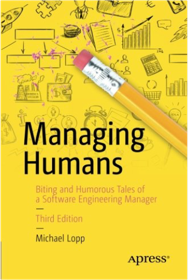 Whether you're an aspiring manager, a current manager, or just wondering what the heck a manager does all day, there is a story in this book that will speak to you―and help you survive and prosper amid the general craziness of dysfunctional bright people caught up in the chase of riches and power. Scattered in repose among these manic misfits are managers, an even stranger breed of people who, through a mystical organizational ritual, have been given power over the futures and the bank accounts of many others. Lopp's straight-from-the-hip style is unlike that of any other writer on management and leadership. He pulls no punches and tells stories he probably shouldn't. But they are magically instructive and yield Lopp’s trenchant insights on leadership that cut to the heart of the matter―whether it's dealing with your boss, handling a slacker, hiring top guns, or seeing a knotty project through to completion. Writing code is easy. Managing humans is not. You need a book to help you do it, and this is it. What You'll Learn Lead engineers Handle conflict Hire well Motivate employees Manage your boss Discover how to say no Understand different engineering personalities Build effective teamsRun a meeting wellScale teams<</div>Who This Book Is For Managers and would-be managers staring at the role of a manager wondering why they would ever leave the safe world of bits and bytes for the messy world of managing humans. The book covers handling conflict, managing wildly differing personality types, infusing innovation into insane product schedules, and figuring out how to build a lasting and useful engineering culture. Clean Code: A Handbook of Agile Software Craftsmanship  Noted software expert Robert C. Martin presents a revolutionary paradigm with Clean Code: A Handbook of Agile Software Craftsmanship . Martin has teamed up with his colleagues from Object Mentor to distill their best agile practice of cleaning code “on the fly” into a book that will instill within you the values of a software craftsman and make you a better programmer—but only if you work at it. What kind of work will you be doing? You’ll be reading code—lots of code. And you will be challenged to think about what’s right about that code, and what’s wrong with it. More importantly, you will be challenged to reassess your professional values and your commitment to your craft. Clean Code is divided into three parts. The first describes the principles, patterns, and practices of writing clean code. The second part consists of several case studies of increasing complexity. Each case study is an exercise in cleaning up code—of transforming a code base that has some problems into one that is sound and efficient. The third part is the payoff: a single chapter containing a list of heuristics and “smells” gathered while creating the case studies. The result is a knowledge base that describes the way we think when we write, read, and clean code. Readers will come away from this book understanding How to tell the difference between good and bad codeHow to write good code and how to transform bad code into good codeHow to create good names, good functions, good objects, and good classesHow to format code for maximum readabilityHow to implement complete error handling without obscuring code logicHow to unit test and practice test-driven developmentThis book is a must for any developer, software engineer, project manager, team lead, or systems analyst with an interest in producing better code. The Clean Coder: A Code of Conduct for Professional Programmers 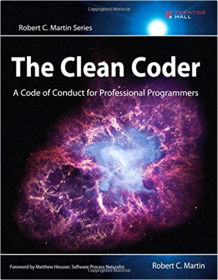 In The Clean Coder: A Code of Conduct for Professional Programmers, legendary software expert Robert C. Martin introduces the disciplines, techniques, tools, and practices of true software craftsmanship. This book is packed with practical advice–about everything from estimating and coding to refactoring and testing. It covers much more than technique: It is about attitude. Martin shows how to approach software development with honor, self-respect, and pride; work well and work clean; communicate and estimate faithfully; face difficult decisions with clarity and honesty; and understand that deep knowledge comes with a responsibility to act. Readers will learn What it means to behave as a true software craftsmanHow to deal with conflict, tight schedules, and unreasonable managersHow to get into the flow of coding, and get past writer’s blockHow to handle unrelenting pressure and avoid burnoutHow to combine enduring attitudes with new development paradigmsHow to manage your time, and avoid blind alleys, marshes, bogs, and swampsHow to foster environments where programmers and teams can thriveWhen to say “No”–and how to say itWhen to say “Yes”–and what yes really means Great software is something to marvel at: powerful, elegant, functional, a pleasure to work with as both a developer and as a user. Great software isn’t written by machines. It is written by professionals with an unshakable commitment to craftsmanship. The Clean Coder will help you become one of them–and earn the pride and fulfillment that they alone possess. Software Project Survival Guide 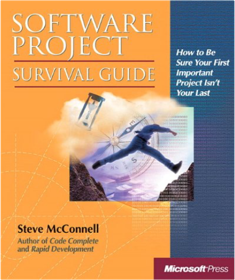 Cracking the Coding Interview: 150 Programming Questions and Solutions  The full list of topics are as follows: The Interview ProcessThis section offers an overview on questions are selected and how you will be evaluated. What happens when you get a question wrong? When should you start preparing, and how? What language should you use? All these questions and more are answered. Behind the ScenesLearn what happens behind the scenes during your interview, how decisions really get made, who you interview with, and what they ask you. Companies covered include Google, Amazon, Yahoo, Microsoft, Apple and Facebook. Special SituationsThis section explains the process for experience candidates, Program Managers, Dev Managers, Testers / SDETs, and more. Learn what your interviewers are looking for and how much code you need to know. Before the InterviewIn order to ace the interview, you first need to get an interview. This section describes what a software engineer's resume should look like and what you should be doing well before your interview. Behavioral PreparationAlthough most of a software engineering interview will be technical, behavioral questions matter too. This section covers how to prepare for behavioral questions and how to give strong, structured responses. Technical Questions (+ 5 Algorithm Approaches)This section covers how to prepare for technical questions (without wasting your time) and teaches actionable ways to solve the trickiest algorithm problems. It also teaches you what exactly "good coding" is when it comes to an interview. 150 Programming Questions and AnswersThis section forms the bulk of the book. Each section opens with a discussion of the core knowledge and strategies to tackle this type of question, diving into exactly how you break down and solve it. Topics covered include Arrays and StringsLinked ListsStacks and QueuesTrees and GraphsBit ManipulationBrain TeasersMathematics and ProbabilityObject-Oriented DesignRecursion and Dynamic ProgrammingSorting and SearchingScalability and Memory LimitsTestingC and C++JavaDatabasesThreads and LocksFor the widest degree of readability, the solutions are almost entirely written with Java (with the exception of C / C++ questions). A link is provided with the book so that you can download, compile, and play with the solutions yourself. Changes from the Fourth Edition: The fifth edition includes over 200 pages of new content, bringing the book from 300 pages to over 500 pages. Major revisions were done to almost every solution, including a number of alternate solutions added. The introductory chapters were massively expanded, as were the opening of each of the chapters under Technical Questions. In addition, 24 new questions were added. Cracking the Coding Interview, Fifth Edition is the most expansive, detailed guide on how to ace your software development / programming interviews. You’re My Favorite Client 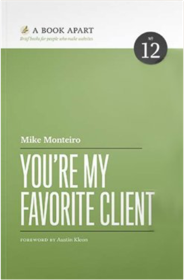 xkcd: volume 0 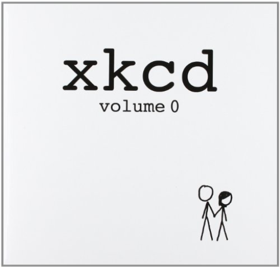 xkcd: volume 0 is the first book from the immensely popular webcomic with a passionate readership (just Google "xkcd meetup"). The artist selected personal and fan favorites from his first 600 comics. It was lovingly assembled from high-resolution original scans of the comics (the mouseover text is discreetly included), and features a lot of doodles, notes, and puzzles in the margins. The book is published by Breadpig, which donates all of the publisher profits from this book to Room to Read for promoting literacy in the developing world. Reset: My Fight for Inclusion and Lasting Change 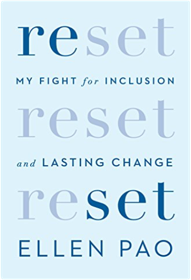 SHORTLISTED FOR THE 2017 FINANCIAL TIMES AND MCKINSEY BUSINESS BOOK OF THE YEAR | NAMED A BEST FALL BOOK BY ELLE AND BUSTLE In 2015, Ellen K. Pao sued a powerhouse Silicon Valley venture capital firm, calling out workplace discrimination and retaliation against women and other underrepresented groups. Her suit rocked the tech world—and exposed its toxic culture and its homogeneity. Her message overcame negative PR attacks that took aim at her professional conduct and her personal life, and she won widespread public support—Time hailed her as “the face of change.” Though Pao lost her suit, she revolutionized the conversation at tech offices, in the media, and around the world. In Reset, she tells her full story for the first time. The daughter of immigrants, Pao was taught that through hard work she could achieve her dreams. She earned multiple Ivy League degrees, worked at top startups, and in 2005 was recruited by Kleiner Perkins, arguably the world’s leading venture capital firm at the time. In many ways, she did everything right, and yet she and other women and people of color were excluded from success—cut out of decisive meetings and email discussions, uninvited to CEO dinners and lavish networking trips, and had their work undercut or appropriated by male executives. It was time for a system reset. After Kleiner, Pao became CEO of reddit, where she took forceful action to change the status quo for the company and its product. She banned revenge porn and unauthorized nude photos—an action other large media sites later followed—and shut down parts of reddit over online harassment. She and seven other women tech leaders formed Project Include, an award-winning nonprofit for accelerating diversity and inclusion in tech. In her book, Pao shines a light on troubling issues that plague today’s workplace and lays out practical, inspiring, and achievable goals for a better future. Ellen K. Pao’s Reset is a rallying cry—the story of a whistleblower who aims to empower everyone struggling to be heard, in Silicon Valley and beyond. Praise for Reset “Necessary and incisive . . . As Ellen Pao detailed her experiences, while also communicating her passion for the work men often impeded her from doing, I was nothing short of infuriated. It was great to see a highly accomplished woman of color speaking out like this, and hopefully this book will encourage more women to come forward, give voice to their experiences in the workplace, and contribute to meaningful change.”—Roxane Gay “[Reset delineates] the very fine line that a professional woman in a male-dominated field will, at some point, most likely find herself treading: ‘Is it possible that I am really too ambitious while being too quiet while being too aggressive while being unlikable?’ . . . The genteel chauvinism of the enlightened elites at Kleiner Perkins . . . carried with it the sting of betrayal. They promised her a meritocracy and gave her a glass ceiling instead: ‘It just wasn’t fair.’ She’s right.”—The New York Times Book Review Accelerate: The Science of Lean Software and DevOps: Building and Scaling High Performing Technology Organizations 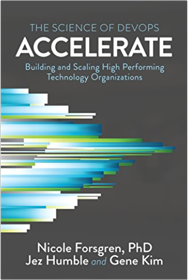 How can we apply technology to drive business value? For years, we've been told that the performance of software delivery teams doesn't matter―that it can't provide a competitive advantage to our companies. Through four years of groundbreaking research to include data collected from the State of DevOps reports conducted with Puppet, Dr. Nicole Forsgren, Jez Humble, and Gene Kim set out to find a way to measure software delivery performance―and what drives it―using rigorous statistical methods. This book presents both the findings and the science behind that research, making the information accessible for readers to apply in their own organizations. Readers will discover how to measure the performance of their teams, and what capabilities they should invest in to drive higher performance. This book is ideal for management at every level. HBR's 10 Must Reads on Managing Yourself 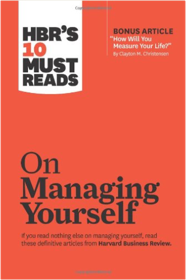 If you read nothing else on managing yourself, read these 10 articles (plus the bonus article How Will You Measure Your Life?” by Clayton M. Christensen). We've combed through hundreds of Harvard Business Review articles to select the most important ones to help you maximize yourself. HBR's 10 Must Reads on Managing Yourself will inspire you to: Stay engaged throughout your 50+-year work life Tap into your deepest values Solicit candid feedback Replenish physical and mental energy Balance work, home, community, and self Spread positive energy throughout your organization Rebound from tough times Decrease distractibility and frenzy Delegate and develop employees' initiative This collection of best-selling articles includes: bonus article How Will You Measure Your Life?” by Clayton M. Christensen, "Managing Oneself," "Management Time: Who's Got the Monkey?" "How Resilience Works," "Manage Your Energy, Not Your Time," "Overloaded Circuits: Why Smart People Underperform," "Be a Better Leader, Have a Richer Life," "Reclaim Your Job," "Moments of Greatness: Entering the Fundamental State of Leadership," "What to Ask the Person in the Mirror," and "Primal Leadership: The Hidden Driver of Great Performance." Good Strategy/Bad Strategy: The difference and why it matters 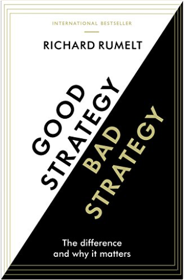 Developing and implementing a strategy is the central task of a leader, whether the CEO at a Fortune 100 company, an entrepreneur, a church pastor, the head of a school, or a government official. Richard Rumelt shows that there has been a growing and unfortunate tendency to equate Mom-and-apple-pie values, fluffy packages of buzzwords, motivational slogans, and financial goals with “strategy.” He debunks these elements of “bad strategy” and awakens an understanding of the power of a “good strategy.” A good strategy is a specific and coherent response to—and approach for overcoming—the obstacles to progress. A good strategy works by harnessing and applying power where it will have the greatest effect in challenges as varied as putting a man on the moon, fighting a war, launching a new product, responding to changing market dynamics, starting a charter school, or setting up a government program. Rumelt’s nine sources of power—ranging from using leverage to effectively focusing on growth—are eye-opening yet pragmatic tools that can be put to work on Monday morning. Surprisingly, a good strategy is often unexpected because most organizations don’t have one. Instead, they have “visions,” mistake financial goals for strategy, and pursue a “dog’s dinner” of conflicting policies and actions. Rumelt argues that the heart of a good strategy is insight—into the true nature of the situation, into the hidden power in a situation, and into an appropriate response. He shows you how insight can be cultivated with a wide variety of tools for guiding your own thinking. Good Strategy/Bad Strategy uses fascinating examples from business, nonprofit, and military affairs to bring its original and pragmatic ideas to life. The detailed examples range from Apple to General Motors, from the two Iraq wars to Afghanistan, from a small local market to Wal-Mart, from Nvidia to Silicon Graphics, from the Getty Trust to the Los Angeles Unified School District, from Cisco Systems to Paccar, and from Global Crossing to the 2007–08 financial crisis. Reflecting an astonishing grasp and integration of economics, finance, technology, history, and the brilliance and foibles of the human character, Good Strategy/Bad Strategy stems from Rumelt’s decades of digging beyond the superficial to address hard questions with honesty and integrity. Lean In Women, Work, and the Will to Lead 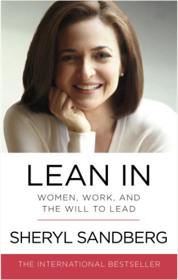 In Lean In, Sheryl Sandberg reignited the conversation around women in the workplace. Sandberg is chief operating officer of Facebook and coauthor of Option B with Adam Grant. In 2010, she gave an electrifying TED talk in which she described how women unintentionally hold themselves back in their careers. Her talk, which has been viewed more than six million times, encouraged women to “sit at the table,” seek challenges, take risks, and pursue their goals with gusto. Lean In continues that conversation, combining personal anecdotes, hard data, and compelling research to change the conversation from what women can’t do to what they can. Sandberg provides practical advice on negotiation techniques, mentorship, and building a satisfying career. She describes specific steps women can take to combine professional achievement with personal fulfillment, and demonstrates how men can benefit by supporting women both in the workplace and at home. Written with humor and wisdom, Lean In is a revelatory, inspiring call to action and a blueprint for individual growth that will empower women around the world to achieve their full potential. Option B: Facing Adversity, Building Resilience, and Finding Joy  From Facebook’s COO and Wharton’s top-rated professor, the #1 New York Times best-selling authors of Lean In and Originals: a powerful, inspiring, and practical book about building resilience and moving forward after life’s inevitable setbacks. After the sudden death of her husband, Sheryl Sandberg felt certain that she and her children would never feel pure joy again. “I was in ‘the void,’” she writes, “a vast emptiness that fills your heart and lungs and restricts your ability to think or even breathe.” Her friend Adam Grant, a psychologist at Wharton, told her there are concrete steps people can take to recover and rebound from life-shattering experiences. We are not born with a fixed amount of resilience. It is a muscle that everyone can build. Option B combines Sheryl’s personal insights with Adam’s eye-opening research on finding strength in the face of adversity. Beginning with the gut-wrenching moment when she finds her husband, Dave Goldberg, collapsed on a gym floor, Sheryl opens up her heart—and her journal—to describe the acute grief and isolation she felt in the wake of his death. But Option B goes beyond Sheryl’s loss to explore how a broad range of people have overcome hardships including illness, job loss, sexual assault, natural disasters, and the violence of war. Their stories reveal the capacity of the human spirit to persevere . . . and to rediscover joy. Resilience comes from deep within us and from support outside us. Even after the most devastating events, it is possible to grow by finding deeper meaning and gaining greater appreciation in our lives. Option B illuminates how to help others in crisis, develop compassion for ourselves, raise strong children, and create resilient families, communities, and workplaces. Many of these lessons can be applied to everyday struggles, allowing us to brave whatever lies ahead. Two weeks after losing her husband, Sheryl was preparing for a father-child activity. “I want Dave,” she cried. Her friend replied, “Option A is not available,” and then promised to help her make the most of Option B. We all live some form of Option B. This book will help us all make the most of it. Congratulations, by the way: Some Thoughts on Kindness 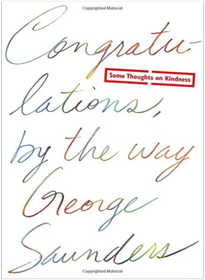 Three months after George Saunders gave a graduation address at Syracuse University, a transcript of that speech was posted on the website of The New York Times, where its simple, uplifting message struck a deep chord. Within days, it had been shared more than one million times. Why? Because Saunders’s words tap into a desire in all of us to lead kinder, more fulfilling lives. Powerful, funny, and wise, Congratulations, by the way is an inspiring message from one of today’s most influential and original writers. Praise for Congratulations, by the way “As slender as a psalm, and as heavy.”—The New York Times “The graduating college senior in your life probably just wants money. But if you want to impart some heartfelt, plainspoken wisdom in addition to a check, you can't do much better than [Congratulations, by the way].”—Entertainment Weekly “The loving selflessness that [George Saunders] advises and the interconnectedness that he recognizes couldn’t be purer or simpler—or more challenging.”—Kirkus Reviews “Warm and tender.”—Publishers Weekly The Product Book: How to Become a Great Product Manager 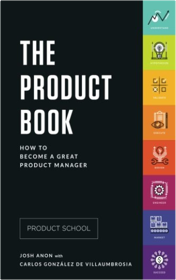 The Art of Business Value 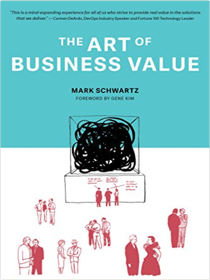 Playful and thought-provoking, The Art of Business Value explores what business value means, why it matters, and how it should affect your software development and delivery practices. More than any other IT delivery approach, DevOps (and Agile thinking in general) makes business value a central concern. This book examines the role of business value in software and makes a compelling case for why a clear understanding of business value will change the way you deliver software. This book will make you think deeply about not only what it means to deliver value but also the relationship of the IT organization to the rest of the enterprise. It will give you the language to discuss value with the business, methods to cut through bureaucracy, and strategies for incorporating Agile teams and culture into the enterprise. Most of all, this book will startle you into new ways of thinking about the cutting-edge of Agile practice and where it may lead. Radical Candor: Be a Kick-Ass Boss Without Losing Your Humanity  "I raced through Radical Candor—It’s thrilling to learn a framework that shows how to be both a better boss and a better colleague. Radical Candor is packed with illuminating truths, insightful advice, and practical suggestions, all illustrated with engaging (and often funny) stories from Kim Scott’s own experiences at places like Apple, Google, and various start-ups. Indispensable." ―Gretchen Rubin author of New York Times bestseller The Happiness Project "Reading Radical Candor will help you build, lead, and inspire teams to do the best work of their lives. Kim Scott's insights—based on her experience, keen observational intelligence and analysis—will help you be a better leader and create a more effective organization." ―Sheryl Sandberg author of the New York Times bestseller Lean In "Kim Scott has a well-earned reputation as a kick-ass boss and a voice that CEOs take seriously. In this remarkable book, she draws on her extensive experience to provide clear and honest guidance on the fundamentals of leading others: how to give (and receive) feedback, how to make smart decisions, how to keep moving forward, and much more. If you manage people—whether it be 1 person or a 1,000—you need Radical Candor. Now." ―Daniel Pink author of New York Times bestseller Drive From the time we learn to speak, we’re told that if you don’t have anything nice to say, don’t say anything at all. When you become a manager, it’s your job to say it—and your obligation. Author Kim Scott was an executive at Google and then at Apple, where she worked with a team to develop a class on how to be a good boss. She has earned growing fame in recent years with her vital new approach to effective management, Radical Candor. Radical Candor is a simple idea: to be a good boss, you have to Care Personally at the same time that you Challenge Directly. When you challenge without caring it’s obnoxious aggression; when you care without challenging it’s ruinous empathy. When you do neither it’s manipulative insincerity. This simple framework can help you build better relationships at work, and fulfill your three key responsibilities as a leader: creating a culture of feedback (praise and criticism), building a cohesive team, and achieving results you’re all proud of. Radical Candor offers a guide to those bewildered or exhausted by management, written for bosses and those who manage bosses. Taken from years of the author’s experience, and distilled clearly giving actionable lessons to the reader; it shows managers how to be successful while retaining their humanity, finding meaning in their job, and creating an environment where people both love their work and their colleagues. Leaders Eat Last: Why Some Teams Pull Together and Others Don't 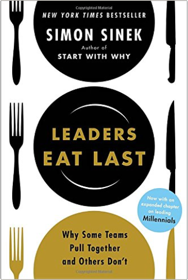 Imagine a world where almost everyone wakes up inspired to go to work, feels trusted and valued during the day, then returns home feeling fulfilled. This is not a crazy, idealized notion. Today, in many successful organizations, great leaders create environments in which people naturally work together to do remarkable things. In his work with organizations around the world, Simon Sinek noticed that some teams trust each other so deeply that they would literally put their lives on the line for each other. Other teams, no matter what incentives are offered, are doomed to infighting, fragmentation and failure. Why? The answer became clear during a conversation with a Marine Corps general. "Officers eat last," he said. Sinek watched as the most junior Marines ate first while the most senior Marines took their place at the back of the line. What's symbolic in the chow hall is deadly serious on the battlefield: Great leaders sacrifice their own comfort—even their own survival—for the good of those in their care. Too many workplaces are driven by cynicism, paranoia, and self-interest. But the best ones foster trust and cooperation because their leaders build what Sinek calls a "Circle of Safety" that separates the security inside the team from the challenges outside. Sinek illustrates his ideas with fascinating true stories that range from the military to big business, from government to investment banking. Thanks for the Feedback: The Science and Art of Receiving Feedback Well 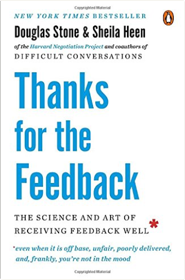 Douglas Stone and Sheila Heen have spent the past fifteen years working with corporations, nonprofits, governments, and families to determine what helps us learn and what gets in our way. In Thanks for the Feedback, they explain why receiving feedback is so crucial yet so challenging, offering a simple framework and powerful tools to help us take on life’s blizzard of offhand comments, annual evaluations, and unsolicited input with curiosity and grace. They blend the latest insights from neuroscience and psychology with practical, hard-headed advice. Thanks for the Feedback is destined to become a classic in the fields of leadership, organizational behavior, and education. RxSwift: Reactive Programming with Swift 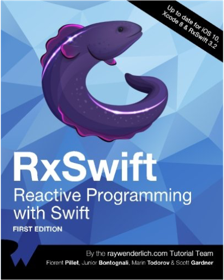 The popularity of reactive programming continues to grow on an ever-increasing number of platforms and languages. Rx lets developers easily and quickly build apps with code that can be understood by other Rx developers — even over different platforms. Not only will you learn how to use the RxSwift port to create complex reactive applications on iOS, you’ll also see how to easily solve common application design issues by using RxSwift. Finally, you’ll discover how to exercise full control over the library and leverage the full power of reactive programming in your apps. Who This Book Is For This book is for iOS developers who already feel comfortable with iOS and Swift, and want to dive deep into development with RxSwift. Topics Covered in RxSwiftGetting Started: Get an introduction to the reactive programming paradigm, learn the terminology involved and see how to begin using RxSwift in your projects.Event Management: Learn how to handle asynchronous event sequences via two key concepts in Rx — Observables and Observers.Being Selective: See how to work with various events using concepts such as filtering, transforming, combining, and time operators.UI Development: RxSwift makes it easy to work with the UI of your apps using RxCocoa, which provides an integration of both UIKit and Cocoa.Intermediate Topics: Level up your RxSwift knowledge with chapters on reactive networking, multi-threading, and error handling.Advanced Topics: Round out your RxSwift education by learning about MVVM app architecture, scene-based navigation, and exposing data via services.And much, much more! By the end of this book, you’ll have hands-on experience solving common issues in a reactive paradigm — and you’ll be well on your way to coming up with your own Rx patterns and solutions! Nudge: Improving Decisions About Health, Wealth, and Happiness 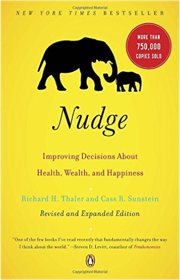 New York Times bestseller Named a Best Book of the Year by The Economist and the Financial Times Every day we make choices—about what to buy or eat, about financial investments or our children’s health and education, even about the causes we champion or the planet itself. Unfortunately, we often choose poorly. Nudge is about how we make these choices and how we can make better ones. Using dozens of eye-opening examples and drawing on decades of behavioral science research, Nobel Prize winner Richard H. Thaler and Harvard Law School professor Cass R. Sunstein show that no choice is ever presented to us in a neutral way, and that we are all susceptible to biases that can lead us to make bad decisions. But by knowing how people think, we can use sensible “choice architecture” to nudge people toward the best decisions for ourselves, our families, and our society, without restricting our freedom of choice. More than 750,000 copies sold What the Most Successful People Do Before Breakfast: And Two Other Short Guides to Achieving More at Work and at Home 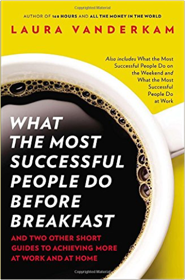 Laura Vanderkam has combined her three popular mini e-books into one comprehensive guide, with a new introduction. It will help readers build habits that lead to happier, more productive lives, despite the pressures of their busy schedules. Trough interviews and anecdotes, she reveals . . .What the Most Successful People Do Before Breakfast—to jump-start the day productively.What the Most Successful People Do On the Weekend—to recharge and prepare for a great week.What the Most Successful People Do at Work—to accomplish more in less time. Women in Tech: Take Your Career to the Next Level with Practical Advice and Inspiring Stories 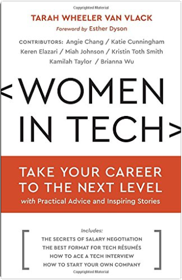 Written by a female startup CEO and featuring a host of other successful contributors, this book will help dismantle the unconscious social bias against women in the tech industry. Readers will learn: · The secrets of salary negotiation · The best format for tech resumes · How to ace a tech interview · The perks of both contracting (W-9) and salaried full-time work · The secrets of mentorship · How to start your own company · And much more Bonus content: Perfect for its audience of hackers and coders, the book contains puzzles and code, created as love letters to women in the tech industry. A distinguished anonymous contributor created the Python code for the cover of the book (ghosted in gloss on the hardcover jacket, and also printed on one of the first pages). It references the mother of computer science, Ada Lovelace. Run the code to see what it does! Mike Selinker and Gaby Weidling of Lone Shark Games, and cryptographer and DefCon puzzle master Ryan “LostboY” Clarke created an “easter egg” of puzzles throughout the book - readers who decipher the puzzles get a prize from the author! The First 90 Days: Proven Strategies for Getting Up to Speed Faster and Smarter, Updated and Expanded 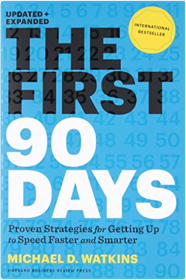 The world’s most trusted guide for leaders in transition Transitions are a critical time for leaders. In fact, most agree that moving into a new role is the biggest challenge a manager will face. While transitions offer a chance to start fresh and make needed changes in an organization, they also place leaders in a position of acute vulnerability. Missteps made during the crucial first three months in a new role can jeopardize or even derail your success. In this updated and expanded version of the international bestseller The First 90 Days, Michael D. Watkins offers proven strategies for conquering the challenges of transitionsno matter where you are in your career. Watkins, a noted expert on leadership transitions and adviser to senior leaders in all types of organizations, also addresses today’s increasingly demanding professional landscape, where managers face not only more frequent transitions but also steeper expectations once they step into their new jobs. By walking you through every aspect of the transition scenario, Watkins identifies the most common pitfalls new leaders encounter and provides the tools and strategies you need to avoid them. You’ll learn how to secure critical early wins, an important first step in establishing yourself in your new role. Each chapter also includes checklists, practical tools, and self-assessments to help you assimilate key lessons and apply them to your own situation. Whether you’re starting a new job, being promoted from within, embarking on an overseas assignment, or being tapped as CEO, how you manage your transition will determine whether you succeed or fail. Use this book as your trusted guide. The Psychology of Computer Programming: Silver Anniversary Edition  Long regarded as one of the first books to pioneer a people-oriented approach to computing, The Psychology of Computer Programming endures as a penetrating analysis of the intelligence, skill, teamwork, and problem-solving power of the computer programmer. Finding the chapters strikingly relevant to today's issues in programming, Gerald M. Weinberg adds new insights and highlights the similarities and differences between now and then. Using a conversational style that invites the reader to join him, Weinberg reunites with some of his most insightful writings on the human side of software engineering. Topics include egoless programming, intelligence, psychological measurement, personality factors, motivation, training, social problems on large projects, problem-solving ability, programming language design, team formation, the programming environment, and much more. Dorset House Publishing is proud to make this important text available to new generations of Weinberg fans and to encourage readers of the first edition to return to its valuable lessons. Mobile First 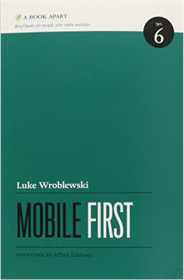 |


Software Development
Collection Total:
56 Items
56 Items
Last Updated:
May 1, 2018
May 1, 2018
 Made with Delicious Library
Made with Delicious Library